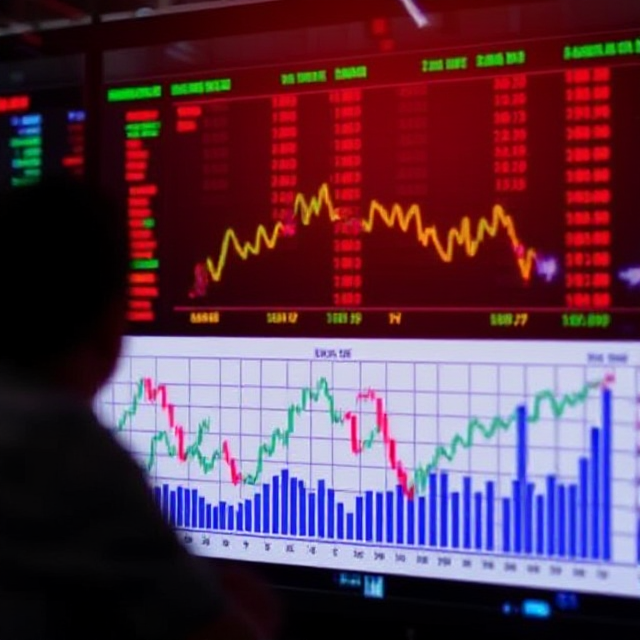Forex trading is a complex and dynamic financial activity that requires skill, strategy, and disciplined execution. Traders operate in a market that is influenced by global economic developments, geopolitical events, central bank policies, and market sentiment. To succeed, Forex Traders rely heavily on technical analysis and well-defined market strategies to navigate price movements, manage risks, and identify opportunities for profit.
This article explores how forex traders utilize technical analysis and strategic approaches to make informed trading decisions, highlighting key tools, techniques, and methodologies employed in the currency markets.
Understanding Forex Market Dynamics
The forex market is the largest financial market globally, with daily trading volumes exceeding trillions of dollars. Currency prices fluctuate continuously due to factors such as interest rate changes, inflation data, trade balances, political developments, and economic forecasts.
Understanding market dynamics is essential for traders. Currency pairs, such as EUR/USD, GBP/USD, and USD/JPY, are influenced by both fundamental and technical factors. While fundamental analysis focuses on macroeconomic indicators and news events, technical analysis emphasizes historical price data, patterns, and statistical indicators to anticipate future price movements.
Traders often combine both approaches, but technical analysis remains a core component for making timely and precise entry and exit decisions.
Importance of Technical Analysis in Forex Trading
Technical analysis involves studying historical price movements and market data to identify trends, patterns, and potential trading opportunities. Unlike fundamental analysis, which evaluates economic conditions, technical analysis focuses on price action, trading volume, and market behavior.
Technical analysis provides several benefits for forex traders:
- Identifying market trends and momentum
- Determining optimal entry and exit points
- Managing risk through stop-loss and take-profit levels
- Enhancing consistency in decision-making
- Supporting the development of automated or algorithmic strategies
By using technical analysis, traders can navigate volatile currency markets more effectively and reduce reliance on speculation or emotion-driven trades.
Key Tools Used in Technical Analysis
Forex traders use a variety of technical tools to analyze price movements and develop strategies. Some of the most widely used tools include charts, technical indicators, support and resistance levels, and trendlines.
Price Charts
Price charts are essential for visualizing market movements. Traders use different chart types, including line charts, bar charts, and candlestick charts. Candlestick charts are particularly popular because they display open, high, low, and close prices in a compact and informative format.
Charts can be analyzed across multiple timeframes, from one-minute charts for scalping to daily or weekly charts for long-term trading. Examining trends across timeframes allows traders to identify potential reversals, breakouts, or continuation patterns.
Technical Indicators
Technical indicators help traders quantify market conditions and forecast potential price movements. Common indicators include:
- Moving Averages (MA): Smooth out price data to identify trends and generate buy or sell signals.
- Relative Strength Index (RSI): Measures momentum and identifies overbought or oversold conditions.
- Bollinger Bands: Indicate volatility and potential price reversal points.
- MACD (Moving Average Convergence Divergence): Highlights trend direction and momentum changes.
By combining multiple indicators, traders can confirm signals and improve the accuracy of their decisions, especially in volatile market conditions.
Support and Resistance Levels
Support and resistance levels represent key price points where buying or selling pressure is likely to emerge. Support acts as a floor preventing further decline, while resistance serves as a ceiling limiting upward movement.
Traders use these levels to set entry points, stop-loss orders, and take-profit targets. Observing how price reacts to these levels provides insight into market sentiment and potential reversals.
Trendlines and Channels
Trendlines connect significant highs or lows on a chart, helping traders visualize the direction of the market. Channels, formed by parallel trendlines, define the range within which a currency pair is trading.
These tools allow traders to assess trend strength, anticipate breakouts, and identify potential trading opportunities within a structured framework.
Popular Market Strategies in Forex Trading
In addition to technical tools, traders implement strategic approaches to navigate currency markets effectively. Strategies vary depending on market conditions, timeframes, and individual risk tolerance.
Trend Following
Trend-following strategies involve trading in the direction of the prevailing market trend. Traders use indicators, moving averages, and trendlines to identify entry points aligned with the trend.
This approach can be applied to short-term, medium-term, and long-term trading. Trend-following strategies require patience, discipline, and careful monitoring of technical signals to exit trades when trends weaken or reverse.
Breakout Trading
Breakout strategies focus on price movements that breach established support or resistance levels. A breakout often signals the start of a strong trend and can lead to significant profit opportunities.
Traders confirm breakouts using volume indicators, momentum analysis, and candlestick patterns to differentiate genuine breakouts from false signals. Breakout trading is particularly effective in volatile markets where price movements can be sudden and substantial.
Range-Bound Trading
Range-bound strategies are suitable for markets that oscillate between support and resistance without establishing a clear trend. Traders buy near support and sell near resistance, taking advantage of predictable price fluctuations.
Indicators such as RSI and stochastic oscillators help confirm overbought and oversold conditions within the range. Range-bound trading requires timely execution and disciplined adherence to defined levels to minimize the risk of sudden breakouts.
Scalping
Scalping involves executing numerous short-term trades to capture small price movements. Traders rely on one-minute to five-minute charts and real-time indicators to make rapid decisions.
This strategy is well-suited to highly liquid and volatile currency pairs. Scalping requires precise execution, low spreads, and effective risk management to ensure that frequent trades remain profitable.
Hedging
Hedging strategies are employed to reduce exposure to adverse market movements. Traders take positions in correlated or inversely correlated currency pairs to offset potential losses.
For example, a trader may hold positions in both EUR/USD and USD/CHF to balance exposure to the US dollar. Hedging is a risk mitigation tool that allows traders to remain active while controlling overall portfolio risk.
Risk Management in Forex Trading
Effective risk management is critical for sustaining long-term trading success. Traders use several techniques to control exposure and protect capital.
Stop-Loss and Take-Profit Orders
Stop-loss orders automatically close trades at predetermined loss levels, limiting downside risk. Take-profit orders secure gains once a target price is reached. Combining these tools ensures discipline and reduces emotional decision-making during sudden market fluctuations.
Position Sizing
Proper position sizing determines the appropriate amount of capital to risk per trade. Traders typically risk a small percentage of their account on each trade to prevent significant losses.
Leverage Control
Leverage amplifies both potential profits and losses. Traders use leverage carefully, adjusting it according to market conditions, strategy, and risk tolerance. Conservative leverage usage helps maintain stability and prevent rapid depletion of capital.
Diversification
Traders diversify positions across multiple currency pairs or instruments to reduce exposure to adverse movements in a single market. Diversification spreads risk and stabilizes overall portfolio performance.
Combining Technical Analysis and Strategy
The most successful forex traders integrate technical analysis with well-defined market strategies. This combination enables traders to:
- Identify optimal entry and exit points
- Confirm trading signals using multiple indicators
- Align trades with prevailing trends or ranges
- Apply risk management consistently
- Adjust strategies to changing market conditions
By combining analysis and strategy, traders increase the probability of profitable trades and maintain disciplined trading practices.
Tools and Resources for Forex Traders
Traders rely on advanced platforms, real-time data, and research tools to support their technical analysis and strategic execution.
Trading Platforms
Platforms such as MT4, MT5, and proprietary systems provide charts, indicators, order execution, and risk management tools. They enable traders to monitor markets, execute trades efficiently, and backtest strategies using historical data.
Economic Calendars
Economic calendars highlight key events, such as interest rate announcements, GDP releases, and employment reports. Awareness of these events helps traders anticipate market volatility and adjust strategies accordingly.
Market News and Analysis
Access to timely market news and analysis allows traders to combine technical insights with fundamental understanding. Traders can evaluate how economic developments, geopolitical events, and policy changes may impact currency prices.
Automated Trading Tools
Automated trading systems execute pre-defined strategies without manual intervention. These tools ensure consistency, eliminate emotional bias, and allow traders to monitor multiple instruments simultaneously.
Conclusion
Forex trading is a challenging yet rewarding endeavor that requires technical expertise, strategic planning, and disciplined execution. Traders who effectively utilize technical analysis and market strategies gain an advantage in navigating volatile currency markets.
By combining price charts, technical indicators, support and resistance levels, trendlines, and other analytical tools with strategies such as trend following, breakout trading, range-bound trading, scalping, and hedging, traders can identify opportunities and manage risk effectively.
Risk management techniques, including stop-loss and take-profit orders, position sizing, leverage control, and diversification, further enhance trading stability. Access to advanced trading platforms, real-time market data, economic calendars, and automated tools empowers traders to implement strategies efficiently and respond to evolving market conditions.
Successful forex traders continuously refine their strategies, adapt to new market developments, and integrate technical analysis into their daily trading routines. By doing so, they increase the probability of consistent profitability while navigating the complexities of the global currency markets.






